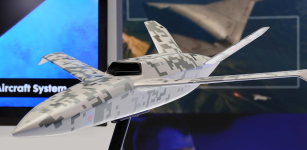To an extent I agree with your argument to give importance to UCAV and related technologies for Pakistani aviation Industry infact I too advocate to have at least a research program for Loyal wingmen.
BUT (Please allow me to disagree here) issue is our aviation industry has not grown vertically upward but top down in it's orientation.
It's has not made any successful aviation product other then Mushshak trainer aircraft.
Before JF-17, we were stuck in overhauling of Mirage Jets and F-7 jets but JF-17 program has initiated many sub program like aviation grade metal sheet working, Avionics production and integration program, air weapon testing range etc.
Now our capabilities which we have acquired after the JF-17 could also be used for UAV & UCAV program but
- UCAV or UAV could not fullfil our requirement of affordable fighter jet which we could field in desired number without breaking the bank.
- Which could be used as a part of team with 5 Gen jet (again in numbers) as 5th gen jet would not be field in large numbers by PAF.
- F-16 would be retired in next 15 years
- Using J-10 in that role mean import of J-10 in large number along with imported 5 Gen jet which mean our offensive punch would be solely dependent on imported system from a single supplier. This will also a very expensive option for PAF
- At least for next 15 to years main need for PAF arise from manned fighter jet segment not from UAV or UCAV segment, therefore ignoring indigenous solution for main needs is not a wise decision.
- Also if we recall the South African aviation industry never recovered after the end of indigenous Atlas Carver jet program they had more experience and technological know how in aviation field so much so that they even had a program related to the indigenous jet engine production, but where are they now after abandoning the car er jet program.
I think the key is to reframe how we approach fighter requirements.
The air warfare environment has changed, and as such, the needs that we once took for granted 10 years ago no longer apply for the next 10 years.
For example, how much of the PAF's air defence and attack requirements require a multi-role fighter? In other words, can the PAF supplement some of its fighter needs with medium-to-long-range SAMs and UCAVs?
Now, once we factor in the existence of large-scale SAM and UCAV programs, how many multirole fighters does the PAF realistically need?
Let's say there's a two-tier requirement: 90 'heavy' long-range types for offensive ops, and 150-180 'medium' multi-role types.
...Do we have the fiscal and industrial capacity to absorb a new fighter program for around 150-180 multirole units? I don't think we do, hence to frantic push to finding export customers for the JF-17 as it is right now.
Moreover, what will this new PFX add to the equation that the J-10CE does not already offer? Okay, we can argue there's more domestic tie-ins, sure, but there's also added cost to achieving those tie-ins (overhead) sitting on top of the production cost.
So, the question is, can we leverage those same resources more efficiently and, in turn, achieve better outcomes? I think so...if we pivot to focusing on domestic UCAVs as well as domestic SAMs, ALCMs, decoys, loitering munitions, SSMs, etc.
However, we can take steps to accelerate our industrial capacities. For example, we can approach Turkiye to join the KAAN for the 'heavy' requirement, and tie our purchase into valuable offset, co-production, and joint R&D initiatives.
Sadly, we dropped our chance to get the most concessions back in 2016-2017 (when the Turks invited us into the TFX) and, instead, did AZM (and look at the results).
Overall, I stand by my much earlier stand...the optimal approach for the PAF was to join the KAAN for the "heavy" requirement and acquire J-10CEs for the "medium" need. With the KAAN, they should've sought workshare, joint-R&D, and local capacity building, and then steer that towards a UCAV program to pair with the KAAN.






